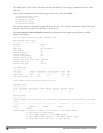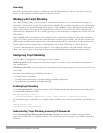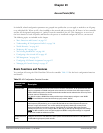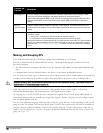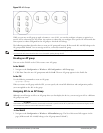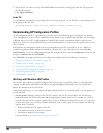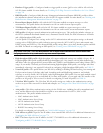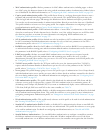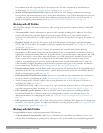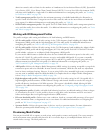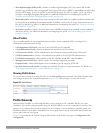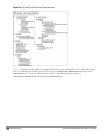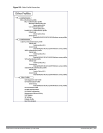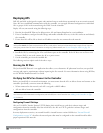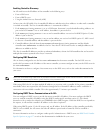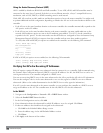
been authenticated and assign that client a specified user role. For more information on stateful Kerberos
authentication, see "Configuring Stateful Kerberos Authentication" on page 224.
l Stateful NTLM authentication Profile—Monitor the NTLM (NT LAN Manager) authentication messages
between clients and an authentication server. If the client authenticates via an NTLM authentication server, the
controller can recognize that the client has been authenticated and assign that client a specified user role. or
details on configuring stateful authentication, see "Stateful and WISPr Authentication" on page 221.
Working with AP Profiles
The AP profiles configure AP operation parameters, radio settings, port operations, regulatory domain, and SNMP
information.
l AP system profile—Defines administrative options for the controller, including the IP addresses of the local,
backup, and master Dell controllers, Real-time Locating Systems (RTLS) server values and the number of
consecutive missed heartbeats on a GRE tunnel before an AP reboots. For details on configuring this profile, see
Table 120.
l Regulatory domain—Defines the AP’s country code and valid channels for both legacy and high-throughput
802.11a and 802.11b/g radios. For examples on figuring a regulatory domain profile, see "Configuring AP Channel
Assignments" on page 435.
l Wired AP profile—Determines if 802.11 frames are tunneled to the controller using Generic Routing
Encapsulation (GRE) tunnels, bridged into the local Ethernet LAN, or configured for a combination of the two
(split-mode). In tunnel forwarding mode, the AP handles all 802.11 association requests and responses, but sends
all 802.11 data packets, action frames and EAPOL frames over a GRE tunnel to the controller for processing.
When a remote AP or campus AP is in bridge mode, the AP handles all 802.11 association requests and
responses, encryption/decryption processes, and firewall enforcement. In split-tunnel mode, 802.11 frames are
either tunneled or bridged, depending on the destination (corporate traffic goes to the controller, and Internet
access remains local). For details, see "Configuring Ethernet Ports for Mesh" on page 464
l Ethernet interface profile—Sets the duplex mode and speed of the AP’s Ethernet link. The configurable speed is
dependent on the port type, and you can define a separate Ethernet Interface profile for each Ethernet link. For
details on configuring this profile, see Table 121.
l Ethernet Interface Port/Wired Port Profile—Specifies a AAA profile for users connected to the wired port on
an AP. For details on configuring this profile, see "Securing Clients on an AP Wired Port" on page 675
l AP Provisioning profile—Defines a group of provisioning parameters for an AP or AP group. For details on
configuring this profile, see Table 119.
l AP Authorization Profile—Allows you to assign an to a provisioned but unauthorized AP to a AP group with a
restricted configuration profile. For details see "Configuring Remote AP Authorization Profiles" on page 534.
l EDCA parameters profile (Station)—Client to AP traffic prioritization parameters, including Enhanced
Distributed Channel Access (EDCA) parameters for background, best-effort, voice and video queues. For
additional information on configuring this profile, see "Using the WebUI to configure EDCA parameters" on
page 701.
l EDCA parameters profile (AP)—AP to client traffic prioritization, including EDCA parameters for background,
best-effort, voice and video queues. For additional information on configuring this profile, see "Using the WebUI
to configure EDCA parameters" on page 701.
Working with QoS Profiles
The QoS profiles configure traffic management and VoIP functions.
l VoIP call admission control profile—Dell’s Voice Call Admission Control limits the number of active voice
calls per AP by load-balancing or ignoring excess call requests. This profile enables active load balancing and call
DellPowerConnectW-SeriesArubaOS6.2 | User Guide AccessPoints(APs) | 399



